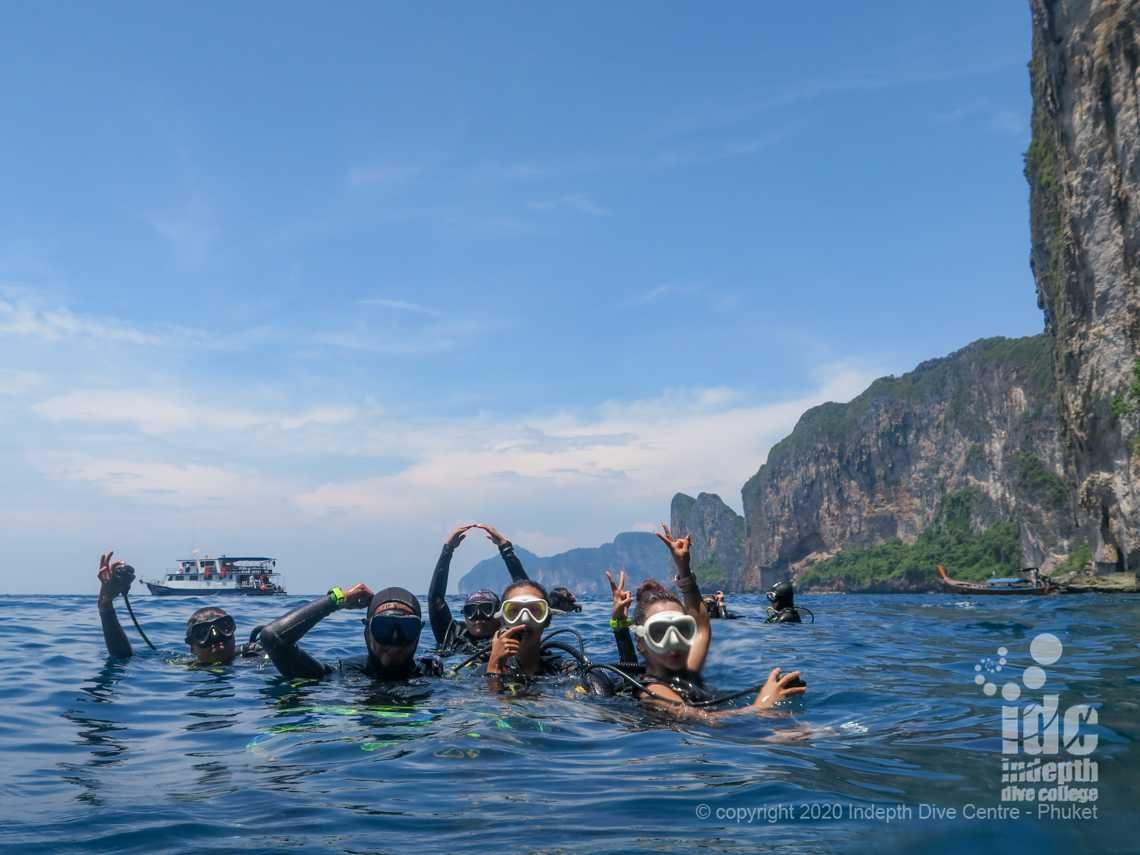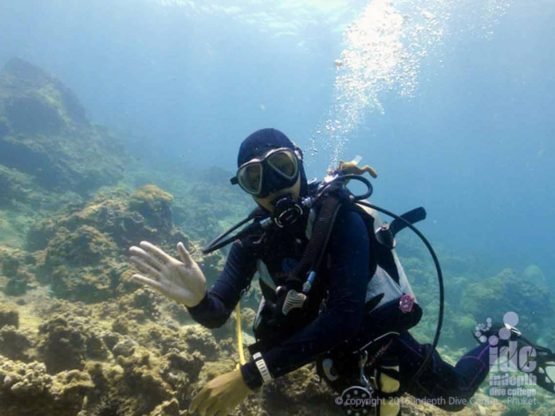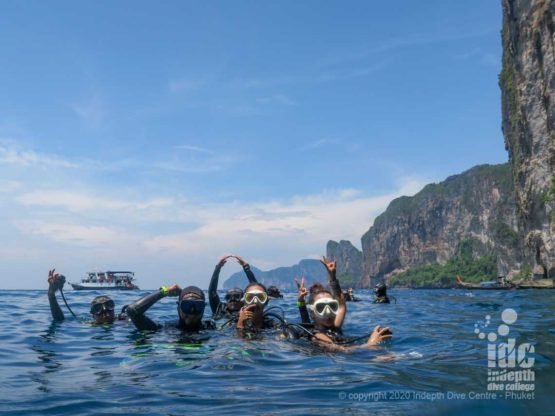
Phi Phi Islands: Turtle Rock / Maya Wall
It is Turtle Rock that marks the entrance to the now famous Maya bay. Maya Bay is located on the West side of Phi Phi Leh, an uninhabited Phi Phi Island 45 km East of Phuket.
The island became famous when Maya Bay was featured in the film “The Beach” starring Leonardo DiCaprio. The island is made up of stunning towering limestone formations for which the area is famous. And in addition, the vast coral reef underneath the crystal clear tropical water is a designated National Marine Park. As such, it is a very popular destination, not only due to the diverse topography under the waves, but also the stunning natural beauty above the water.
Getting to Turtle Rock / Maya Bay takes around 2 ½ hours, however most divers find that the time passes quickly. Why not enjoy your cooked breakfast onboard and relax in the Thai sunshine, whilst making new friends with the other divers on the boat. Turtle Rock / May Bay have plenty to attract divers to this dive site, including most marine life found in The South Andaman Sea.
Moreover, the resident turtles and Blacktip Reef Sharks make up only a small portion of what can be found here ...


What is one way way to dive the world-famous Turtle Rock & May Bay?
Most dives at Turtle Rock begin in the shallows, close to the cliffs that make up the face of the island.
We start the dive by slowly descending with your buddy on to the shallow reef. The first thing you will see is a sloping Coral Garden that is awash with Gorgonian Sea Fans and Barrel Sponges. From the shelf, the reef slopes gently down to 15m where it meets the sandy sea bed. From here it’s best to head South as the Coral Garden carries on and until you come to a large Coral Bommie. There are lots of small Glass fish that make this their home, as well as lots of Crabs and the occasional Scribbled Filefish.
It is generally best to continue down to 15m where you will find a swim-through. This takes you out to a flat sandy sea area that heads out to sea. Once again take your time as it’s worth taking a few minutes here to check if there are any sharks in the area.
Blacktip sharks are often seen swimming as if “on patrol”
If you now carry on along the reef you will find there are some channels decorated with colourful corals and Gorgonian Sea Fans. There are enough here to please even the most demanding photographer. Moreover, by now you should have come across one or more of the resident turtles, and if you’re lucky, a Clown Triggerfish.
Keep looking away from the reef as Blacktip sharks often cruise this area to check out who is making “all the noise.”
You Dive Guide will usually keep heading South on the reef until you see an overhang formed in the rocks. The Divemaster will have a careful look here as there is a chance to find turtles sleeping in the shadows.
Can Rebreather Divers dive at Turtle Bay and Maya Bay?
Turtle Rock / Maya Bay is another Phi Phi dive site popular with Rebreather divers, and as such is regularly by Rebreather divers. This is once again not only due to the diverse marine life, but also with the excellent depth range. After all, how would you like to make a 3 hour Recreational Rebreather dive? While the regular divers are having their 1st dive, their surface interval, and their 2nd dive?
From here keep heading South on the reef until you see overhangs formed in the rocks. Here,if you look carefully, you have a chance to find turtles sleeping in the shadows. After this it’s a good idea to head back up the reef until you come across a few big coral outcrops at about 7m.
Here you’ll find lots of schools of fish including colourful snappers. In fact, the fish here are actually quite diver friendly. As such they don’t seem to mind you swimming through the middle of them. Once you have cleared these schools, then carry on South along the garden looking at all the different marine life. This is the best place to make your safety stop before heading to the surface and the warm sunshine.
Becoming a PADI Master Scuba Diver
If you’re interested in becoming a PADI Master Scuba Diver, then 1 of the 5 required Specialty Diver courses, can easily be conducted here. You might want to consider doing part of the PADI Underwater Naturalist or the PADI Fish Identification Specialty. Not only can you expect to find some Squid, Octopus, Scorpion fish, but also some Groupers and Banded Sea Snakes. Additionally, there are also Yellow Snappers and Spotted Box Fish, various Giant Moray and White eyed moray eels. As well as Common Porcupine fish, Trumpet fish, Angelfish, Puffer fish and Barracuda. And finally, don't forget the ever-friendly Batfish, Lionfish and Painted Spiny Lobsters that are all common to this dive site.
As your face clears the water, have look around you. And you will see that you're either inside or close to Maya Bay ...












